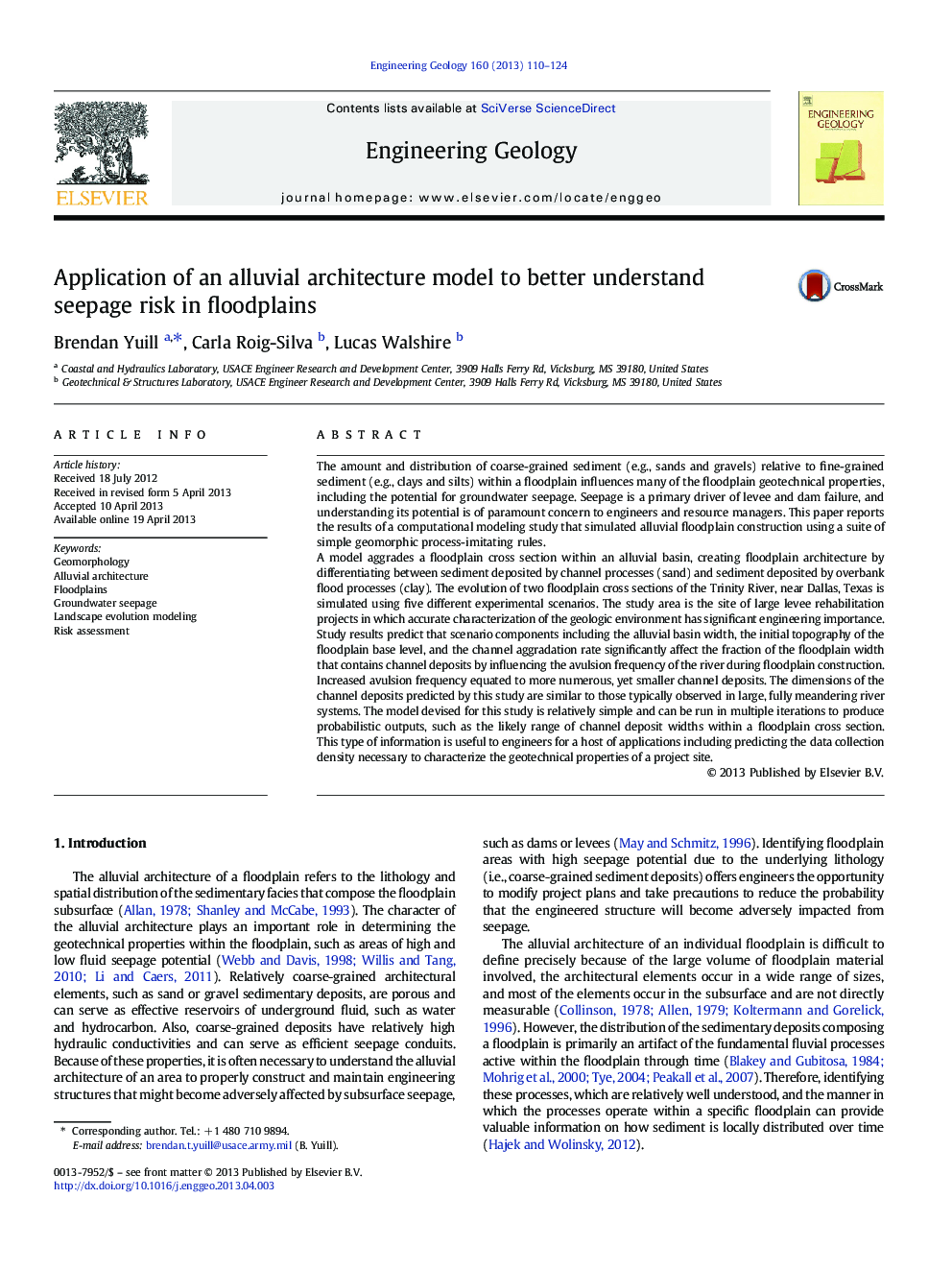| کد مقاله | کد نشریه | سال انتشار | مقاله انگلیسی | نسخه تمام متن |
|---|---|---|---|---|
| 4743634 | 1641824 | 2013 | 15 صفحه PDF | دانلود رایگان |
• We use a simple floodplain evolution model to predict alluvial architecture.
• Modeled scenarios alter the area underlain with channel deposits by nearly 50%.
• Basin width, sedimentation rates, and avulsions affect channel deposit properties.
• Geomorphic understanding can improve geotechnical investigations.
The amount and distribution of coarse-grained sediment (e.g., sands and gravels) relative to fine-grained sediment (e.g., clays and silts) within a floodplain influences many of the floodplain geotechnical properties, including the potential for groundwater seepage. Seepage is a primary driver of levee and dam failure, and understanding its potential is of paramount concern to engineers and resource managers. This paper reports the results of a computational modeling study that simulated alluvial floodplain construction using a suite of simple geomorphic process-imitating rules.A model aggrades a floodplain cross section within an alluvial basin, creating floodplain architecture by differentiating between sediment deposited by channel processes (sand) and sediment deposited by overbank flood processes (clay). The evolution of two floodplain cross sections of the Trinity River, near Dallas, Texas is simulated using five different experimental scenarios. The study area is the site of large levee rehabilitation projects in which accurate characterization of the geologic environment has significant engineering importance. Study results predict that scenario components including the alluvial basin width, the initial topography of the floodplain base level, and the channel aggradation rate significantly affect the fraction of the floodplain width that contains channel deposits by influencing the avulsion frequency of the river during floodplain construction. Increased avulsion frequency equated to more numerous, yet smaller channel deposits. The dimensions of the channel deposits predicted by this study are similar to those typically observed in large, fully meandering river systems. The model devised for this study is relatively simple and can be run in multiple iterations to produce probabilistic outputs, such as the likely range of channel deposit widths within a floodplain cross section. This type of information is useful to engineers for a host of applications including predicting the data collection density necessary to characterize the geotechnical properties of a project site.
Journal: Engineering Geology - Volume 160, 27 June 2013, Pages 110–124
